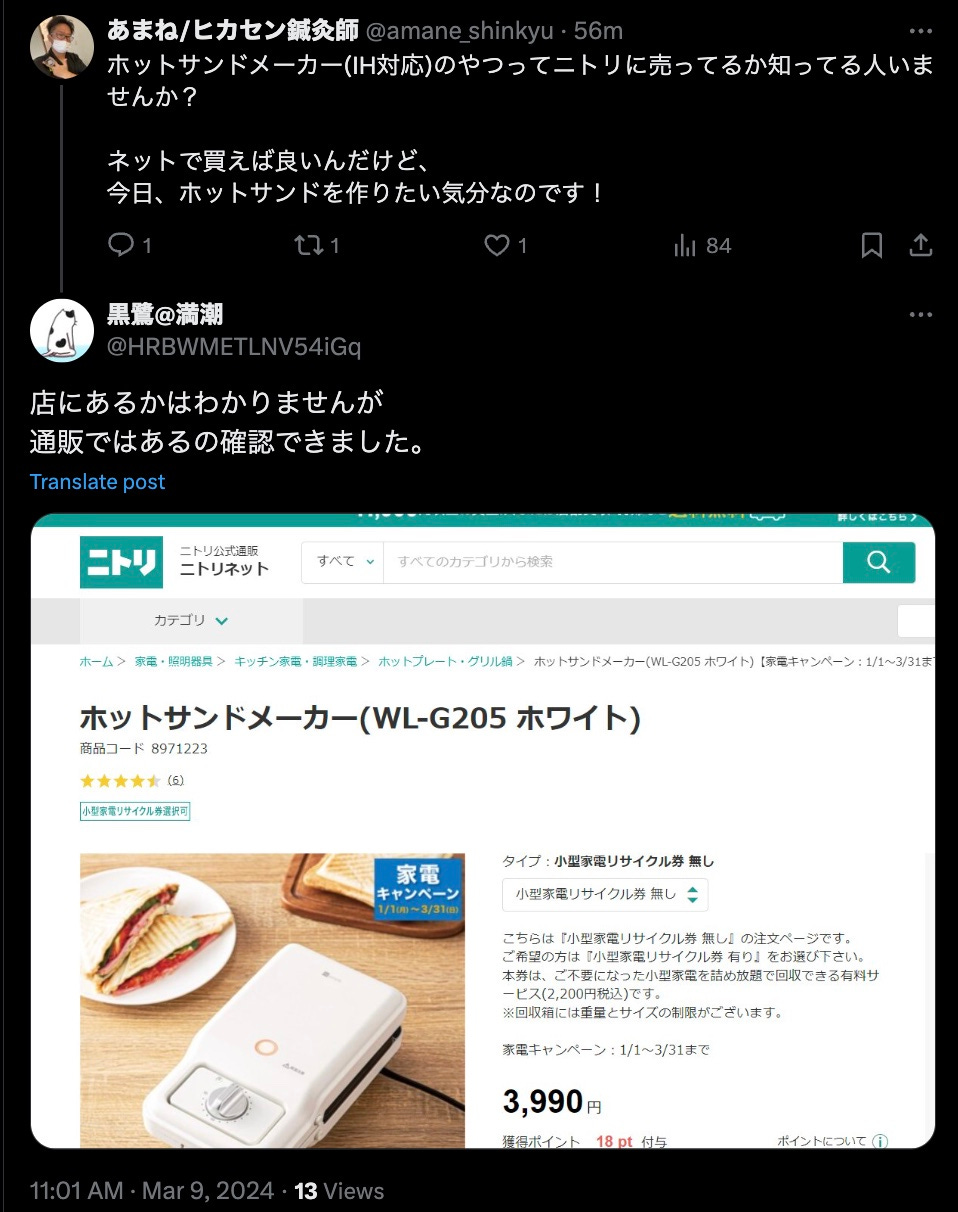確認
The most useful kanji compound - How to Japanese - August 2024
This is How to Japanese, a monthly newsletter with something about Japan/Japanese and a dash of いろいろ.
日本・日本語: 確認
What is the single most useful two-kanji compound in Japanese?
I think my personal answer to this question is 確認 (kakunin, confirm/check/view). I’m not sure a more flexible word exists in the language, other than possibly いい (ii, good/fine/not good/not fine/enough), but that’s an adjective, and this month I’m thinking about kanji compounds.
確認 is generally translated as “confirm,” but what does “confirm” mean? According to the 大辞泉 we have:
はっきり認めること。また、そうであることをはっきりたしかめること。
Recognize clearly. Also, check that something clearly is a certain way.
This definition shows why 確認 is broad and flexible enough to escape the English expedient “confirm,” and I encourage you to do so whenever necessary/possible. The one that comes to mind is “view” because I see it so often in game-related material, most frequently with instructional writing like manuals or explanatory text at the bottom of a screen. I actually wrote about this FIFTEEN years ago on the blog.
Something like Xメニューでアイテムを確認することができる (X menyū de aitemu o kakunin suru koto ga dekiru). You could translate this as “check” or “confirm” here, but the English “view” is so much more natural in context. “View your items from menu X” or “On menu X you can view your items.” Any variation along these lines will get the point across. If you think about it enough, “view” really is a way to say “confirm.” You’re visually confirming that something does indeed clearly exist.
確認 can also buy you time. If someone asks you a question, respond with an immediate 確認します! (Kakunin shimasu, Let me check!) to convey that you received the information, got on your pony, and are ready to ride…as soon as you’ve checked the information they are looking for. You’re acting on a request even if you don’t have an answer immediately. Once you’ve confirmed the information, 確認できました (kakunin dekimashita, I was able to confirm [the information]) is a quick way to start a follow-up message, after which you can provide the details that you were able to confirm.
確認 is also incredibly sticky. It picks up prefixes and suffixes as well as any compound in Japanese, transforming into a dense block of language that can convey so much is such a small space.
確認中 (kakunin-chū) - Being confirmed
要確認 (yō-kakunin) - In need of confirmation
確認後 (kakunin-go) - After confirmation
確認前 (kakunin-mae) - Before confirmation
未確認 (mi-kakunin) - Not yet confirmed
再確認 (sai-kakunin) - Confirm again
Are there any that I’ve missed? Some of these you can throw into a document or a spreadsheet to keep track of the status for…just about anything that you can confirm. Others are useful as an introductory phrase at the start of a sentence, such as まだ確認中ですが (Mada kakunin-chū desu ga, This is still being confirmed, but…).
Speaking of which, 確認 is useful as one of those linguistic signposts that allow us to prepare a listener and make subsequent conversation more effective, an idea I am realizing I hinted at on the blog TEN years ago. If you need to ask someone for information, rather than jumping straight into your main point, use 確認 as a signal for what you’re about to do: 確認したいですが (Kakunin shitai desu ga, I’d like to confirm something). Doing so fires a beacon that silently screams “HEY, I’M ABOUT TO ASK YOU A QUESTION. GET YOUR BRAIN INTO ANSWER-SEEKING MODE.” Thus primed, your conversation partner is more likely to be able to answer your question or provide the information that you need.
So, to まとめる the idea of 確認:
- It’s a broad word that gets used to mean view/check/confirm/recognize.
- As a two-character compound, it pairs with all variety of suffixes and prefixes, forming a tremendous number of useful three-character compounds.
- It can also serve as several different discourse signals: Use it to buy time or to give your conversation partner a heads up that you’ll be asking them a question.
Here’s a fun little example I found on Twitter. Someone helps another person find a sandwich maker at Nitori:
Although I’m certain they could go one step further and 確認 which Nitori locations have the sandwich maker in stock. I’m fairly certain that technology exists. Actually, let me make sure. 確認します!
いろいろ
Over on the blog this month, I go into a little more depth about 確認 as an “airbag expression.” Check it out for a link to this month’s podcast as well, which I use to cover some material that I should have included last month.
I meant to share this link last month, but I found this Japanese blog post with a look at some of the mansions of Kobe, including one from Ashiya. This is the kind of wealth at the top of the slope that runs up to Mt. Rokko.
Translator Jason Franzman has some excellent, must-read advice for all translators (subtitlers in particular) over on LinkedIn. In order to work as a professional translator, it really is critical to develop your creative writing skills, preferably in a space that’s putting your writing in front of actual readers out in the world. There’s nothing like the pressure of eyes on your words to force you to tighten up your writing.
Dr. Wes is good at memes. He also has great TikToks, as I believe I’ve mentioned before.
My tweet about beds at the Tokyo Olympics got picked up by some French accounts, apparently because they’re using similar beds in Paris. There are rumors that these were to prevent people from having sex in the Olympic Village, but I think that’s been debunked.
Check out Old Photos of Japan by Kjeld Duits! I mention this newsletter toward the end of the podcast this month.




What about 確認 for "declared dead"?